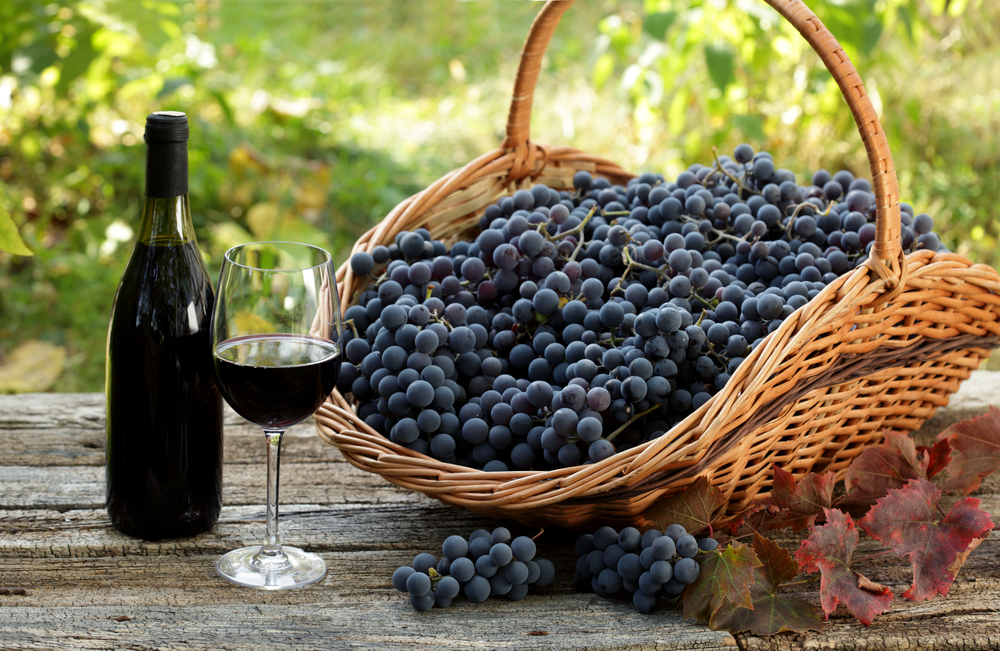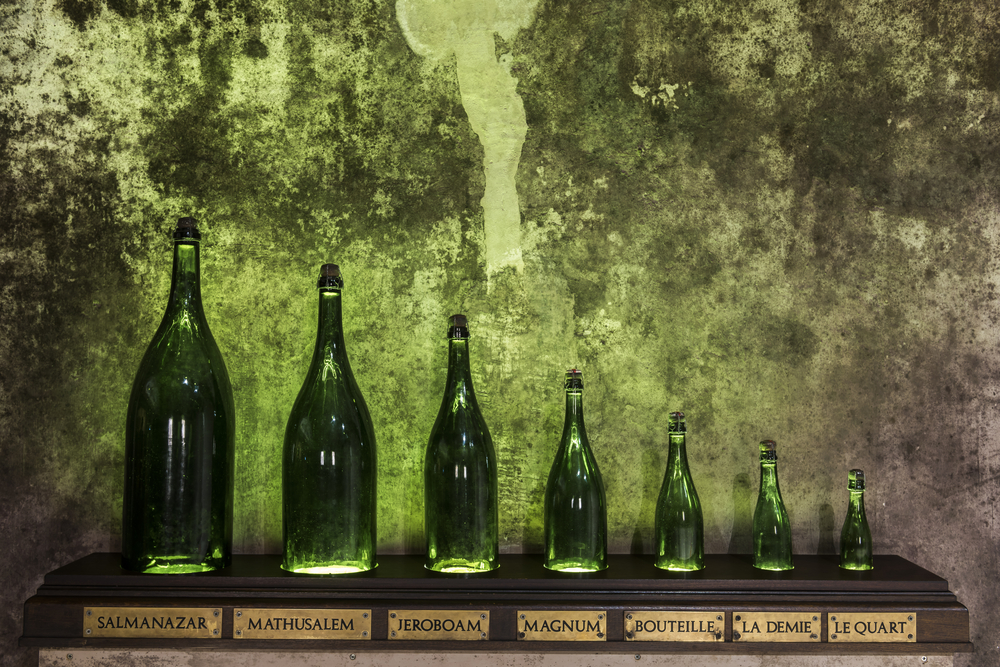The question of how many grapes it takes to make a single bottle of wine is one that wine enthusiasts have been asking for as long as they have been drinking the stuff.
It is the question that vineyard workers and owners are most regularly asked on tours and tastings, and the question that concerns them most during the process of making.
This is because the number of grapes per bottle relates directly to the relative worth and therefore price of each bottle, and the ultimate profit that the vineyard can make depends on this figure.
But as with all easy questions – there is no easy answer to the number of grapes per bottle of wine, because it depends on so many different variables.

Soil type, grape type, location, climate and pressing style all affect the number of grapes per bottle, as do the grower’s methods and intentions.
And the disparity between final numbers is pretty huge, which explains the wide variety of flavors and qualities of wine available in the world today.
Just think of the price difference between a bargain bottle of wine from your local grocery store and an expensive bottle bought in a restaurant.
Of course, vintage and vineyard reputation all play a part in pricing too, but the yield per acre and number of grapes per bottle are a large contributing factor in price.
All that having been said, let’s press on and try to extract some details on this topic, so that you can get a hint of how many grapes are in the average bottle of wine, and a whiff of all the variables involved.
Average Figures
Let’s start by laying out some average figures so that you can get a sense of the general numbers involved. These figures have been rounded for ease of understanding, and relate to a medium sized winery.
As we go into more detail you will begin to see how much these figures can vary.
Average number of grapes per bottle – 500
Average Bottle – 750ml
Average number of grapes per cluster – 100
Average number of clusters per bottle – 5
Average number of clusters per vine – 40
Average number of grapes per vine – 4,000
Average number of bottles per vine – 8
Average number of vines per acre – 800
Average number of bottles per acre – 6,400
How Many Acres Should A Winery Be?
An acre, in the old-fashioned sense, was the amount of land that it was possible for one farmer to plough on their own in a single day. These days it is a more fixed area of 4047 square meters, which is just a little smaller than an American football pitch.
Wineries vary in acres according to how artisan or commercial they are. Small wineries generally need to have a minimum of 5 acres to be profitable, and wineries who sell to wholesale suppliers need at least 15 acres.
And some of the largest wineries in the world are around 11,000 acres in size!! So you can see, there is a huge disparity between the biggest and smallest ventures. Yet more relevant than the number of acres is the number of tons of grapes produced per acre of land.
How Many Tons Per Acre Should A Winery Produce?
The first metric that any winery owner needs to consider is the number of tons of grapes they produce per acre of land.
Grapes are measured in weight (tons and pounds) whereas wine is measured in volume (gallons and ml) which is where some confusion arises, but here are some averages to help explain:
A 750ml bottle holds 0.2 gallons of wine
– That’s 2.5 pounds of grapes
1 cluster of grapes weighs ½ pound
– That’s 5 clusters per bottle
1 ton of grapes makes 160 gallons of wine
– That is 800 bottles
Related: Just how much does a wine bottle weigh? Empty and full.
The number of tons per acre varies drastically depending on how the vines are pruned. You see, grape vines can be pruned in such a way as to encourage many, many grapes to grow per cluster and many clusters per vine.
The process of cutting back and encouraging growth is used by commercial farmers to increase yield, resulting in a heavier load at the end of any harvest.
However, the quality of each individual grape is diminished by the presence of other grapes, as the energy and aromatic compounds of the vine have to be divided up amongst them.
A vine with many grapes does not produce more vitamins, minerals, energy or flavor, it simply produces more grapes with less flavor.
By the same token, if there were a vine with only one cluster growing on it, that cluster would likely be the most juicy, sweet and delicious fruit imaginable – though not very profitable!
A small, luxury artisan winery might produce 3 tons of grapes per acre of land. This would result in around 2,400 bottles of wine per acre, which would mean the price of those bottles would have to be pretty high, as would the flavor and quality.
A large, commercial winery might look to produce 3 or 4 times that amount, averaging more like 5 or 6 tons of grapes per acre.
These grapes may have thicker skin, therefore be less juicy, or may be more acidic and watery due to the diminished amount of energy and nutrients they received during growth, all of which result in a less palatable drink and a lower price tag.
Type Of Grape
The type of grape being grown will also affect the number of grapes per bottle of wine as the different varieties come in varying shape, size and thickness.
A Pinot Noir grape, for example, has a very thin skin which makes it ideal for pressing as there is plenty of flesh and juice to be extracted with very little pulp for wasting. Other grapes have thick flesh and less juice, or are smaller in size but hold great flavor.
The soil will also vary from South Africa, to Italy to California, and the flavors of the grapes will also vary as a result. This is because the different soils hold different minerals and nutrients, some being softer than others, some more resilient.
The number of vines that can grow, and number of grapes per vine are all affected by these factors.
Climate And Location
The number of grapes produced per vine is also affected by the climate of the location that they are grown in.
In wine-making circles the two distinct environments are referred to as Old World and New World wine, with Old World referring to the European wineries of Italy, France and Germany amongst others, and New World referring to the Americas, Australasian and South Africa amongst others.
Old World wines tend to be grown in cooler climates that experience more seasonal differentiation. New World grapes are grown in warmer climates. But of course, all these classifications are generalized and there are many exceptions to the rule.
Grapes grown in cooler conditions generally have less ripeness in the fruit and therefore produce a tarter, more bright flavor on drinking. These tarter flavors are often described as ‘dry’ as they have more acidity and less sweetness overall.
The lower sugar content means that these cool climate wines have a lower alcohol content and are generally ‘light bodied’ in texture.
By contrast, warmer conditions produce grapes with more ripeness and a softer, sweeter flavor profile. These ‘sweet’ wines have less acidity and a higher sugar content, making them more alcoholic and fuller bodied on the palette.
You would often need less of these grapes per bottle because they require more dilution with water in order to make a balanced drink.
A wet climate can lead to a more watery grape, and a less vivid final product. In a similar way, a very hot climate can cause the grapes to dry and shrivel, meaning that they are small and less fruitful at harvest.
Cold climate
- Less ripeness
- Tarter, more bright and ‘dry’ flavored
- More acidic, less sweet
- Less alcoholic, lighter bodied
Warm Climate
- More ripeness
- Softer, sweeter flavored
- Less acidic, higher sugar content
- More alcoholic, full bodied
Type Of Press
The type of press can also affect the amount of wine produced from your grapes and there are a few different methods in common use amongst wine makers today.
Vertical Barrel Press
The Vertical Barrel Press is the method that was used by the ancient Romans and is still popular among artisan and independent winemakers.
In this method small batches of grapes are placed in a barrel and a winch is turned which lowers a heavy weight onto the batch and causes the juice to squeeze out of them.
This method is relatively gentle and can be controlled by hand, meaning that the grapes receive very little trauma in the process and the quality of the liquid is premium. However, some juice will not be extracted and this method does not work in large quantities.
Continuous Press
Commercial wineries use a Continuous Press which squeezes enormous amounts of grapes from all angles, rotating them to ensure the maximum amount of juice is drawn.
This means that more juice can be taken per ton of grapes, and more grapes can be processed in a day, however the quality of the huge volumes of juice squeezed will be affected by bruising and trauma to the fruit.
- Shrimp Cocktail (and More) Wine Pairing Guide - 09/06/2022
- What Wine Serving Sizes Look Like: Standard Size and More - 08/06/2022
- How Much Sugar is in Wine: Glass and Bottle Sugar Content - 08/06/2022






